
Sitala is a genus of air-breathing land snails, terrestrial pulmonate gastropod mollusks in the subfamily Durgellinae of the family Helicarionidae.

Ampelita is a genus of air-breathing land snails, terrestrial pulmonate gastropod mollusks in the family Acavidae.
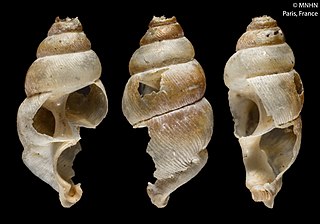
Boucardicus is a genus of land snails with an operculum, terrestrial gastropod mollusks in the family Alycaeidae.
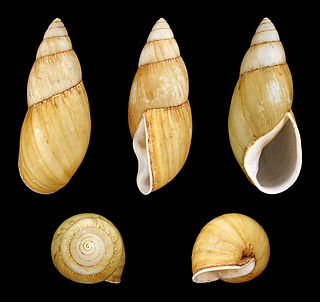
Clavator is a genus of air-breathing land snails, terrestrial pulmonate gastropod mollusks in the family Clavatoridae.
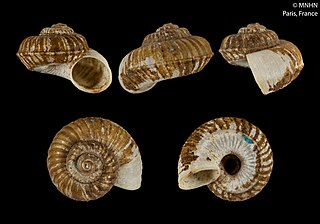
Cyathopoma is a genus of land snails with an operculum, a terrestrial gastropod mollusks in the family Cyclophoridae.
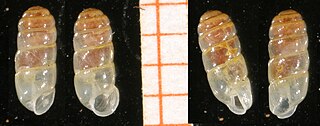
Gulella is a genus of very small air-breathing land snails, terrestrial pulmonate gastropod mollusks in the family Streptaxidae.
Trachycystis is a genus of small air-breathing land snails, terrestrial pulmonate gastropod molluscs in the family Charopidae.

Tropidophora is a genus of land snails with an operculum, terrestrial gastropod mollusks in the family Pomatiidae.

Cyclophoridae is a taxonomic family of small to large tropical land snails with an operculum, terrestrial gastropod mollusks in the order Architaenioglossa belonging to the subclass Caenogastropoda.

Littorina saxatilis, common name the rough periwinkle, is a species of small sea snail, a marine gastropod mollusc in the family Littorinidae, the winkles or periwinkles. First identified in the 1700s, it has been misidentified as a new species 112 times.

Kalidos is a genus of air-breathing land snail, a terrestrial pulmonate gastropod mollusk in the subfamily Helicarioninae of the family Helicarionidae.
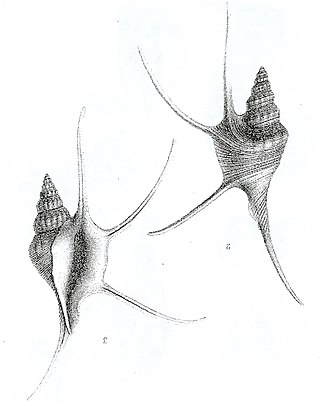
Cuphosolenus is a genus of extinct small to medium-sized sea snails, marine gastropod mollusks in the family Aporrhaidae and the superfamily Stromboidea, known from the Jurassic and lower Cretaceous periods. Cuphosolenus was named by Edouard Piette in 1876.

Pitar is a genus of saltwater clams, marine bivalve molluscs in the subfamily Callocardiinae of the family Veneridae, the Venus clams. The genus contains over 60 species.

Pelecyora is a genus of saltwater clams, marine bivalve molluscs in the family Veneridae, the venus clams.
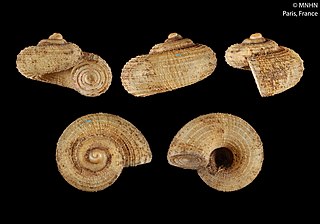
Cyclotopsis is a genus of small sea snails, marine gastropod mollusks in the family Tornidae.

Globivenus is a genus of bivalves in the family Veneridae. It has a nearly cosmopolitan distribution, except for subarctic regions.

Microcystis is a genus of small air-breathing land snails, terrestrial pulmonate gastropod mollusks in the subfamily Microcystinae in the family Euconulidae, the hive snails.
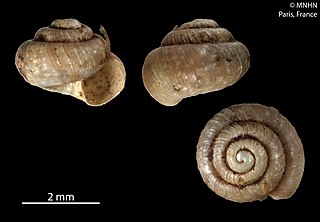
Reticulapex is a genus of air-breathing land snails, terrestrial pulmonate gastropod mollusks in the family Acavidae.

Acroptychia is a taxonomic genus of small to large tropical land snails with an operculum, terrestrial gastropod mollusks in the family Cyclophoridae.


















